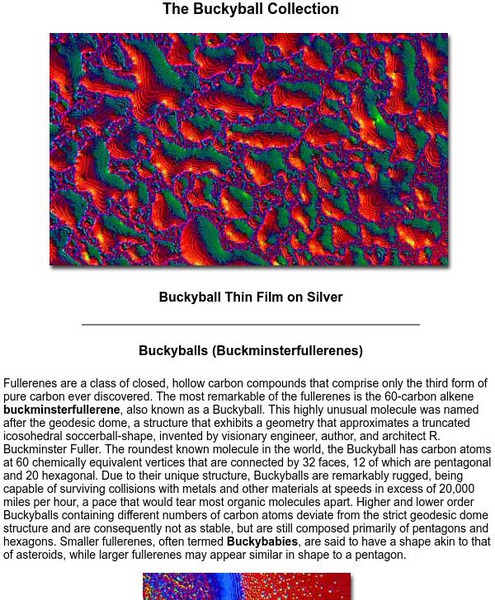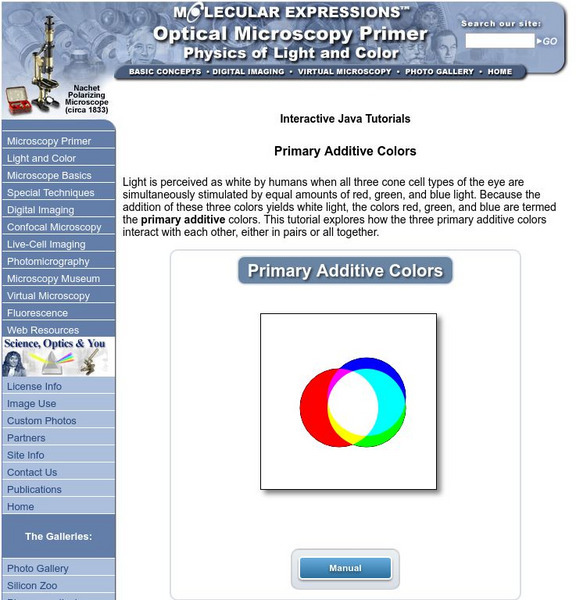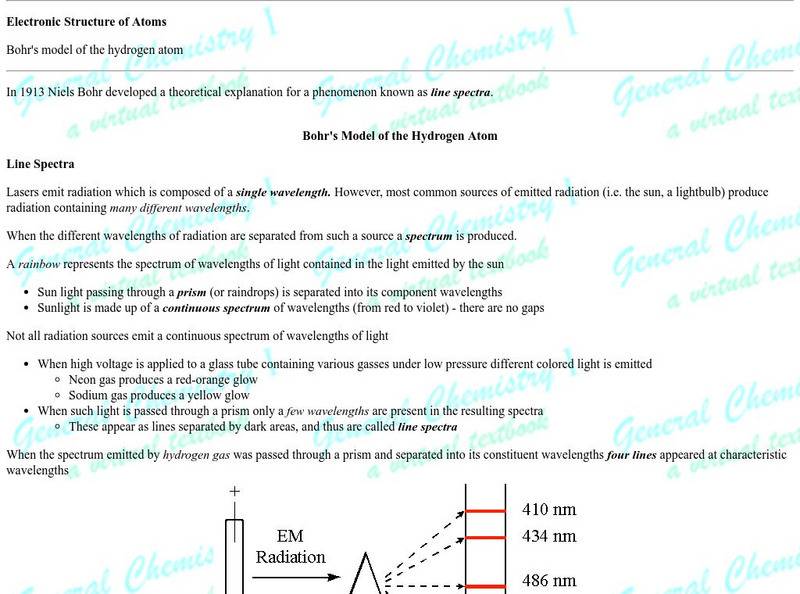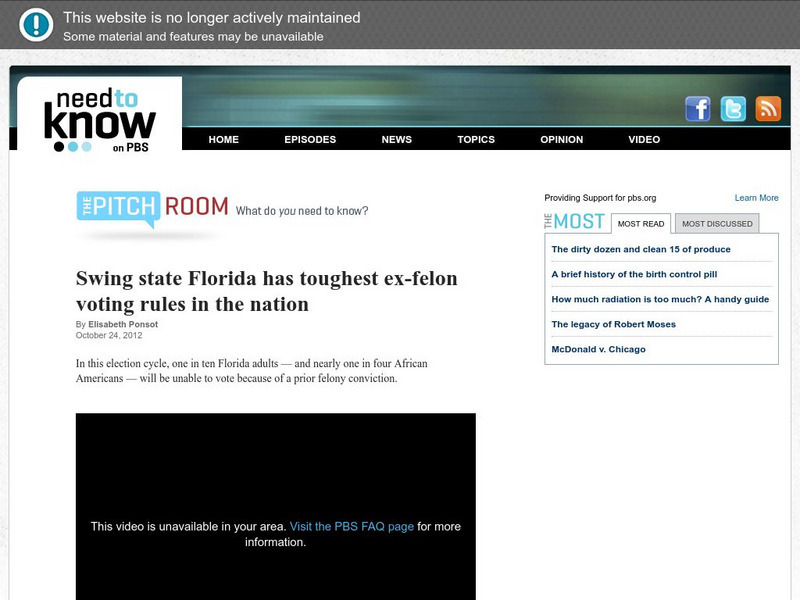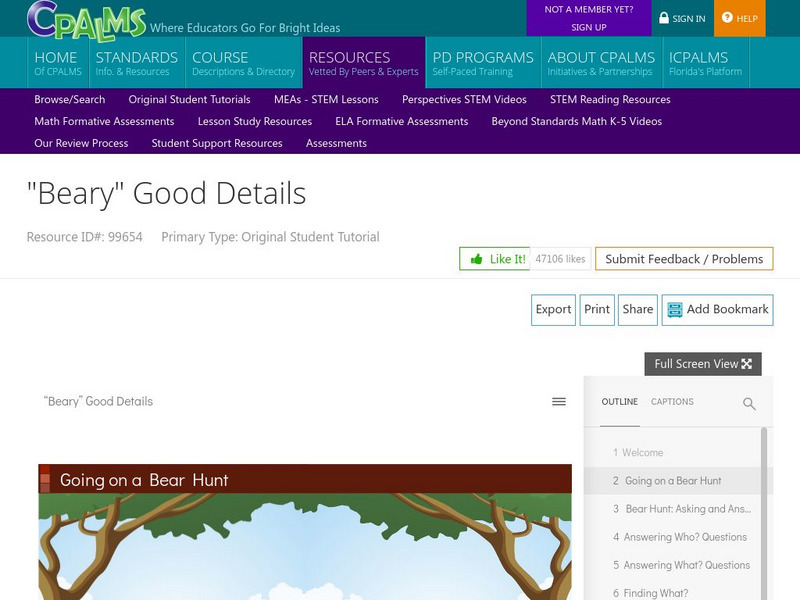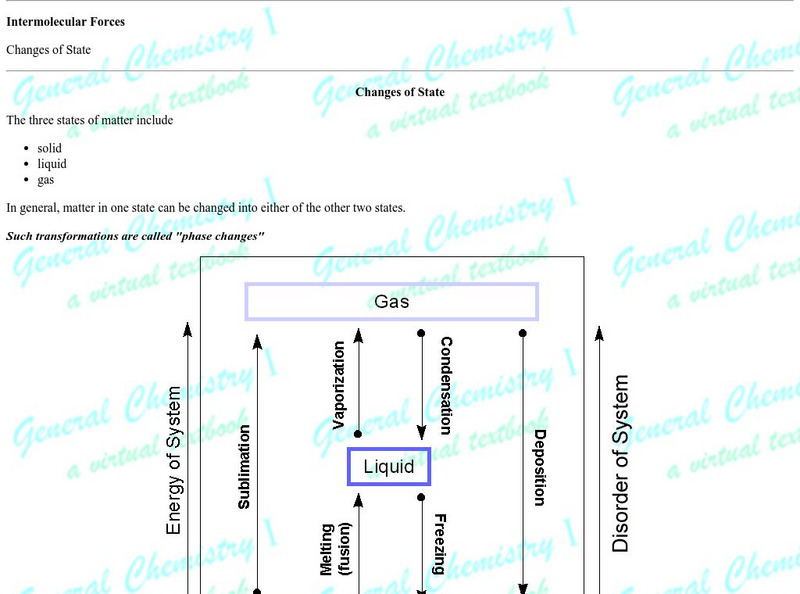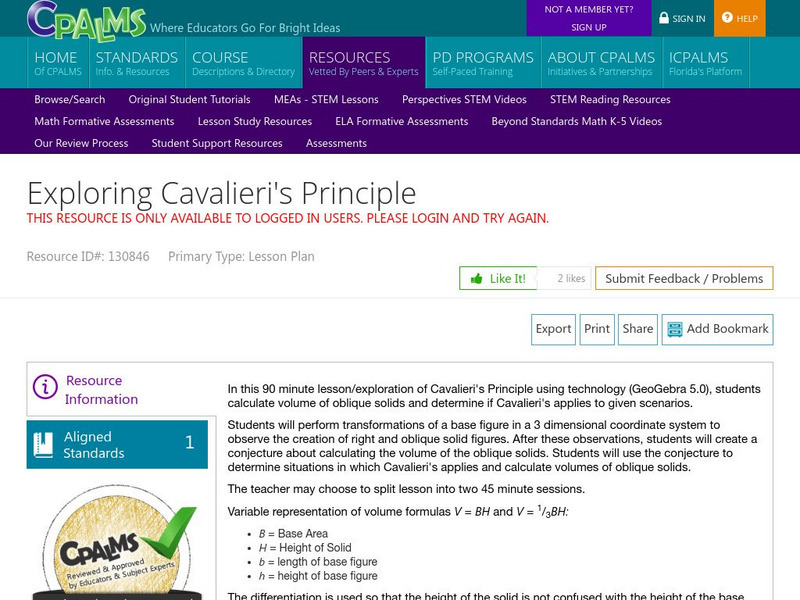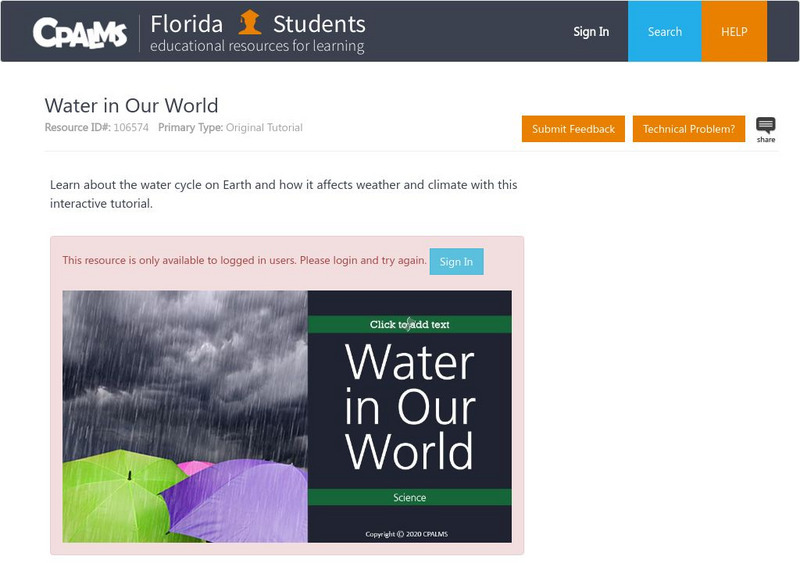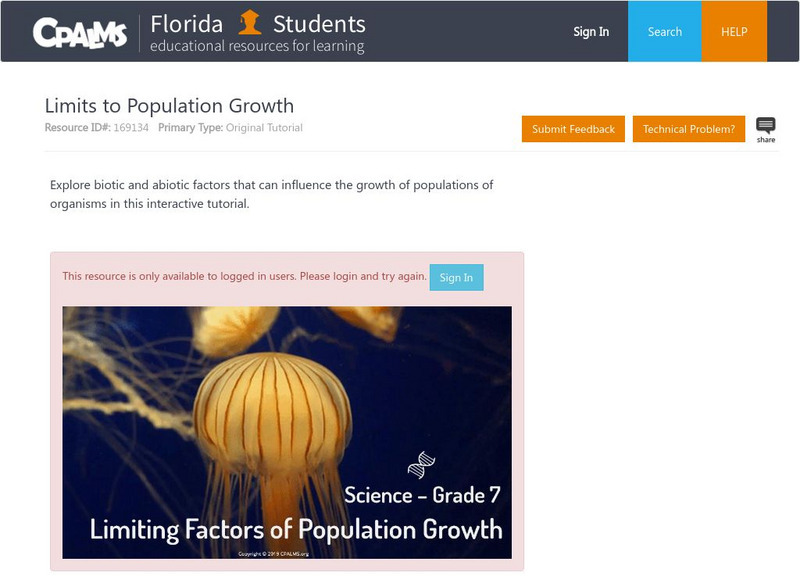Hi, what do you want to do?
Florida State University
Florida State University: Magnet Lab: Team Tesla: How We Keep the World's Most Powerful Magnets in Shape
Our magnets are like world-class athletes - Team Tesla, if you will. They have an awful lot of power, but to stay in that kind of shape, they need to eat and drink - a lot.
Florida State University
Florida State University: Molecular Expressions: The Buckyball Collection
General information of buckyballs and a description of buckyballs containing ions, called dopeyballs, which have superconducting properties. Colorful photomicrographs of fullerenes on thin films.
Florida State University
Florida State University: Molecular Expressions: Primary Additive Colors
Manipulate the primary color circles of light to see how overlapping the circles affect the colors. An explanation is included.
Michael Blaber, PhD
Florida State University: The Bohr Model of the Atom
A well designed clear tutorial explaining the energies involved in the Bohr model of the atom. Illustrations add to the clearly presented equations.
Florida State University
Florida State University: Molecular Expressions Microscopy Primer: Light and Color Refraction of Light
Comprehensive and sophisticated overview of light refraction includes an historical overview of the subject and explanations of the mathematics that underpin refractive indexes, the relative index of refraction, Snell's law, and light...
Curated OER
Map of Florida
Good resource for information on Florida. Includes map and state flag, motto, state symbols, origin of name, governmental officials, brief history of the state, and links to famous people of the state.
Curated OER
Etc: The United States of America, 1783 1853
A map of the United States showing the growth of the nation from 1776-1853. This map is coded to show the thirteen original states, and the territories acquired in 1783, by the Louisiana Purchase in 1803, the northern territories, West...
Curated OER
Etc: Maps Etc: United States at the Close of the Revolution, 1789
A map from 1872 of the country east of the Mississippi showing the newly formed United States after the ratification of the Constitution in 1789. The map is keyed to show the states at the time and the Spanish territories of West and...
Curated OER
Etc: Maps Etc: The Territory of the United States, After February 19, 1821
A map of the United States in 1821 showing the extent of the territory after taking control of Florida from Spain. The map is color-coded to show the possessions of the United States, Great Britain, and Spain at the time, and shows the...
Curated OER
Etc: Maps Etc: The Result of the Missouri Compromise, 1821
A map of the United States in 1821 showing the results of the Missouri Compromise of 1820 over the issue of prohibition of slavery. The map is coded to show the areas of the Free States, the Slave States, the Michigan Territory as Free...
iCivics
I Civics: Comparative Constitutions
Students explore how the US Constitution is similar to and different from state constitutions. Uses the constitutions of Florida and Virginia as examples.
PBS
Pbs Need to Know: Florida Ex Felon Voting Laws
Did you know that one in ten adults in Florida is currently not eligible to vote due to having been convicted of a felony? Find out how African Americans in particular are disproportionately affected. Article has particular emphasis on...
Other
Florida Department of Environmental Protection: Climate Change and Coral Reefs
Find out about the devastating effects climate change is having on Florida's coral reef ecosystems.
CPALMS
Cpalms: "Beary" Good Details
This tutorial shares the story of "Goldilocks and the Three Bears" as he goes on a bear hunt to find out who has been sneaking into his house. Question words are highlighted to help Baby Bear collect key details to help him solve this...
Michael Blaber, PhD
Florida Sate University: Changes of State: Heating Curve for Water
Discusses the phase changes and heating processes of water and how this can be illustrated with a heating curve.
Curated OER
National Park Service: Castillo De San Marcos National Monument
Built to protect and defend Spain's hold on Florida as early as 1672, Castillo de San Marcos was designated as a national monument in 1924 by President Calvin Coolidge. A deeper history of the monument and the town of St. Augustine,...
University of South Florida
Fcat Express: Fcat Practice Reading Tests
Provides nine interactive, online practice tests for the fourth grade Florida Comprehensive Assessment Test (FCAT). Each test uses a number of reading skills and uses both multiple choice questions and short written responses. It...
CPALMS
Cpalms: Exploring Cavalieri's Principle
[Free Registration/Login Required] In this lesson, students use the geometry program GeoGebra to explore Cavalieri's Principle, specifically to investigate whether it applies when calculating the volume of oblique solids. Lesson includes...
CPALMS
Cpalms: Building Graduation Caps
[Free Registration/Login Required] In this lesson, young scholars build geometric models of graduation caps using stiff paper. The activity requires the application of skills in finding surface area, understanding similarity, knowing the...
CPALMS
Cpalms: Connections and Concussions: Teens and Sports
In this interactive learning module, students read an informational text about teen concussions and identify the key individuals in the text. They then identify and use details about those individuals to make connections between them, as...
CPALMS
Cpalms: Structures and Skeletons
In this interactive learning module, students read informational text about dinosaurs and examine paragraph structure. They will learn about different types of text structure for informational paragraphs, identify the most effective...
CPALMS
Florida State University Cpalms: Florida Students: Water in Our World
Discover the processes of the water cycle and learn about its effect on weather and climate.
CPALMS
Florida State University Cpalms: Florida Students: Photosynthesis
Learn all about photosynthesis from the parts of a plant to the reactions that make food.
CPALMS
Florida State University Cpalms: Florida Students: Limits to Population Growth
Explore biotic and abiotic factors that can influence the growth of populations of organisms in this interactive tutorial.






